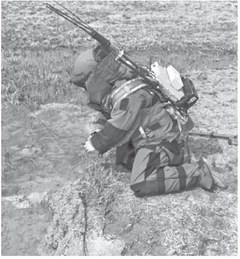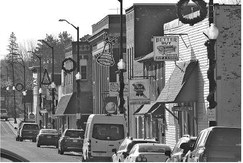Changes sought to make DMAP benefits more accessible
Ten years since recommendations from Dr. James Kroll’s Deer Trustee Report were enacted in Wisconsin, opinions will vary around the state regarding how effective items like county unit boundaries, farmland antlerless tags, deer advisory councils and automated registration have been.
The Deer Management Assistance Program, more commonly known as DMAP, is one recommendation from the report that has steadily grown in popularity since its implementation in 2014.
Introduced as a program that could allow landowners to achieve deer management goals on their properties and build relationships with the Department of Natural Resources, DMAP officially had 3,334 members covering 505,000 acres last November. Haley Frater, the DNR’s DMAP/Private Lands Coordinator the past two years, said the program has added nearly 70 new members since then covering at least 10,000 more acres. Members are present in 71 of 72 Wisconsin counties with Menominee County being the only exception. As of last November, Taylor County was one of the state’s leaders with more than 12,000 acres enrolled and Clark County had more than 10,000 acres enrolled.
A decade into DMAP’s existence, changes may be on the way that aim to make its benefits more accessible to more members.
The proposed DMAP redesign, the result of a recent 10-year review of the program, was initially scheduled to go before the state’s Natural Resources Board in October, but its presentation was postponed to December. If approved by the board, the changes will then go through legislative reviews next year before being implemented, which Frater is hoping happens by about January 2026.
“This was really kind of a good time to do a review just given that it’s been 10 years,” Frater said in an Oct. 31 interview. “The other piece of it is the program has been more popular than I think was ever expected, which is really good. We have a lot of people. Their needs and the landowner demographics of Wisconsin have all changed. It just really led to a great time to review and look back at what our members want and need and what the landowners and hunters of Wisconsin want and need.”
Currently in DMAP, there are three levels of membership available to landowners. Level 1 has no cost and provides participants with educational resources and workshops and communication opportunities with a local biologist and forester.
Level 2 is open to properties of at least 160 acres and comes with a cost of $75 per three-year enrollment and Level 3 is open to properties of at least 640 acres at a cost of $150 per three-year enrollment. Cooperatives of neighboring properties can be created to reach the acreage minimums.
One of the main attractions of Levels 2 and 3 is an on-site visit from a DMAP biologist and the county forester where detailed management plans can be created for the participants’ properties. Reducedrate antlerless harvest tags can be issued if it’s determined a property needs a herd reduction.
One of the key revisions the DNR is proposing is to make the on-site services available to members with 40 acres enrolled in the program.
“I love them. They’re awesome,” Frater said of the on-site visits. Frater, stationed in Wisconsin Rapids, is one of four DMAP biologists who conduct on-site visits. Others are stationed in Spooner, Antigo and Black River Falls.
“I tell landowners all the time, the site visit is their time,” Frater said. “They get to kind of direct what happens. It really starts with a conversation about what their goals are and what they’re trying to achieve for the land and their deer herd. Basically what are their management goals? Then we walk the property and we talk for hours, as long as they want. I typically tell landowners to pick out five to eight places that they have questions about or want input on and those are the spots we go to walk and talk. We really listen to what their goals are, and look at the property and figure out what are the best options to achieve that goal. So they’re very landowner driven.”
Shortly after the visit, landowners receive a written summary of what was discussed and project plans that lay out step-by-step guides for discussed projects and connections to financial resources that may help them complete those projects.
Suggested projects can range from large commercial timber harvests to planting new trees to selectively reducing some trees to reduce competition for oak trees and anything in between.
“Depending on the landowners’ goals we’ll talk about things like prairie plantings or native vegetation planting,” Frater said. “We’ll talk about food plots. We’ll talk about wetland management, invasive species management. So it’s really kind of wholistic. It’s really, really dependent on the landowners and what they want. I’ve been on properties where it’s very deer focused and we’re really thinking about how we can improve the number of deer that they see while hunting and then I’ve been on properties where they don’t hunt and we’re talking about songbirds and how to improve their property for other wildlife or maybe turkeys. I just wrote a management plan for quails. It really is about the landowner’s goals and helping them achieve those.”
If a landowner’s goals include reducing deer populations, that too is part of the onsite discussions.
“We do what’s called a property assessment and with that we have a series of different metrics that we can use to determine if there is an issue with the deer herd as far as are they causing damage or exceeding what the habitat can support,” Frater said. “We do that assessment every three years and then the number of tags that are provided is really dependent on the landowner and how many deer they’re willing and able to take as well as what we think can be supported without causing harm to the population.”
Program participants have access to a “My DMAP” database that includes a wealth of information about their properties and where to look for more information if they need. Frater said the monthly DMAP newsletter appears to be gaining in popularity.
“We write custom articles every month that cover everything from habitat management to herd management as well as connecting to information and resources available,” she said. “We try to make the topics pertinent to the season.”
In-person and virtual workshops are offered periodically as well. Examples of topics recently covered in those include


